Digital Poster
Arrhythmia & Mapping
ISMRM & ISMRT Annual Meeting & Exhibition • 10-15 May 2025 • Honolulu, Hawai'i

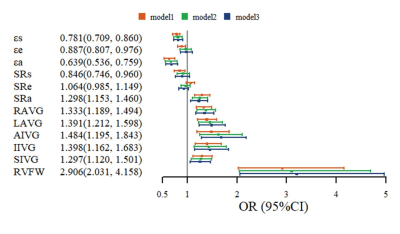 |
Computer Number: 49
4317. Association
Between Epicardial Adipose Tissue, Left Atrial Strain and
New-Onset Atrial Fibrillation in Patients with Hypertension
Using CMR
Z. Yang, W. Sun, D. Tang, L. Xia
The Second Affiliated Hospital, Army Medical University (Third Military Medical University), Chongqing, China
Impact: LA strain and EAT thickness parameters can
sensitively detect LA dysfunction and epicardial fat
deposition in hypertensive patients with new-onset AF,
demonstrating great potential in prognosis of new-onset AF.
Further study is needed to elucidate the underlying
pathophysiological mechanisms.
|
|
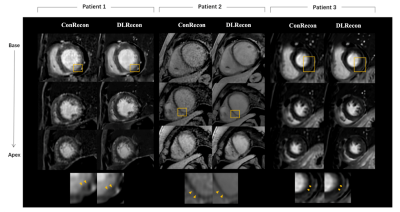 |
Computer Number: 50
4318. Deep
Learning Reconstruction Improved LGE Image Quality for
Myocardial Scar Detection in Cardiomyopathy Patients with
Ventricular Arrhythmias
A. Sun, Z. Wang, J. Dai, Y. Xiao
Second Affiliated Hospital of Naval Medical University, Shanghai, China
Impact: DLRecon can improve the image quality of LGE for
better delineating characteristics of lesion. Our results
suggested the application of DLRecon based LGE might be
beneficial for evaluating sudden cardiac death risk
stratification in cardiomyopathy patients with VAS.
|
|
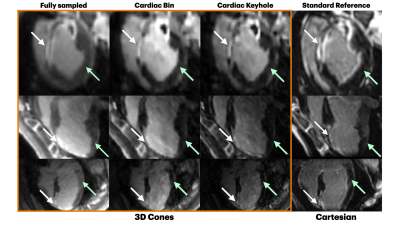 |
Computer Number: 51
4319. Improved-Contrast
Accelerated 3D Cones LGE using Cardiac Binning and
Keyhole-Filtered View Sharing
J. Patel, C. Sheagren, T. Escartin, L. Biswas, J. Barry, G.
Wright
University of Toronto, Toronto, Canada
Impact: This accelerated imaging enables high-quality
myocardial scar visualization, improving pre-treatment or
real-time intra-treatment planning for MRI-guided cardiac
arrhythmia interventions.
|
|
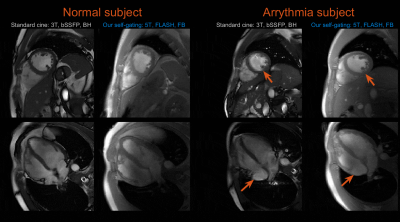 |
Computer Number: 52
4320. 5T
cardiac cine imaging with selective PCA self-gating on normal
and arrythmia subjects
W. Yang, W. Liu, P. Hu
United Imaging Healthcare, Shanghai, China
Impact: The selective PCA method yields cardiac and
respiratory signals in 2D CMR imaging, acting as surrogates
for ECG and belts in CMR scans. The achieved cardiac
mechanical motion aids cardiac cine imaging in arrhythmic
subjects.
|
|
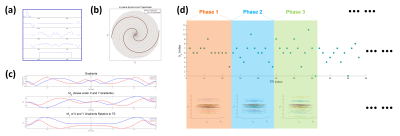 |
Computer Number: 53
4321. Single-Beat
Real-Time Assessment of Cardiac Function Enabled by the
SPARTA-3D Scheme
Y. Hu, J. Hu, C. Zhao, Z. Zhong, H. Li, Q. Liu, Y. Ye, J.
Xu, P. Hu, Q. Fan
Tianjin University, Tianjin, China
Impact: SPARTA-3D enables real-time 3D cardiac
assessment for each heartbeat, offering comprehensive
whole-heart coverage and high temporal resolution of
approximately 50 ms. This technique holds significant
potential for diagnosing cardiovascular diseases,
particularly arrhythmias, by effectively capturing critical
beat-to-beat variations.
|
|
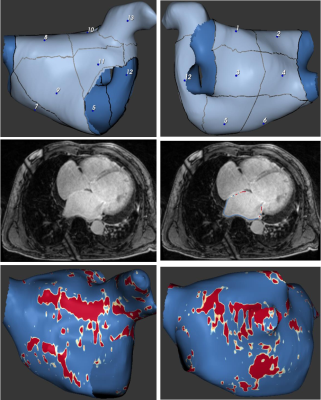 |
Computer Number: 54
4322. Quantitative
analysis of left atrial fibrosis in atrial fibrillation patients
using 3D Late Gadolinium-enhanced Cardiac MRI
Q. Hua, Z. Guo, Y. Ge, J. An, M. Wang
Fuwai Central China Cardiovascular Hospital, Zhengzhou, China
Impact: Three-dimensional late gadolinium enhancement
cardiac magnetic resonance quantification of left atrial
fibrosis distribution in AF patients provides insights into
fibrosis patterns. Fibrosis in posterior wall zone 3 is a
risk factor for persistent AF and potential target for
personalized therapies.
|
|
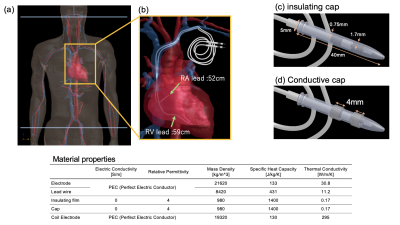 |
Computer Number: 55
4323. Effect
of Novel Conductive Caps on Abandoned Leads of Cardiac
Implantable Electric Devices to Suppress RF-induced Heating
R. Oguchi, S. Yatsushiro, K. Shiraga, K. Kuroda
Tokai University, Hiratsuka City, Japan
Impact: Remarkable heat reduction effect of the
conductive cap was verified. This reduction effect was
equivalent to that the uncapped, indicating that the risk of
RF-induced heating can be dramatically improved. We will
evaluate biological safety issues towards clinical
applications.
|
|
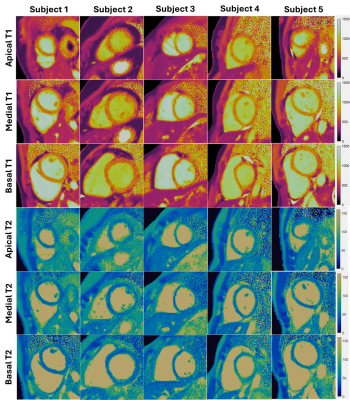 |
Computer Number: 56
4324. Deep
Image Prior Denoising of Cardiac FISP-MRF T1, T2 and M0 Maps at
0.55T
Z. Liu, I. Rashid, P. Agarwal, N. Seiberlich, L. Shen, J.
Hamilton
University of Michigan, Ann Arbor, United States
Impact: This study demonstrates the feasibility of
FISP-based cardiac MR Fingerprinting for T1,
T2,
and M0 mapping
at 0.55T using a Deep Image Prior reconstruction to suppress
noise at low field, outperforming a low-rank MRF
reconstruction method.
|
|
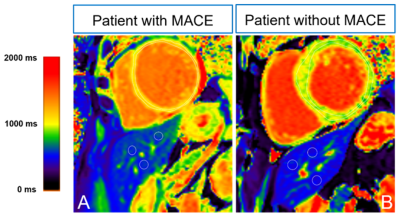 |
Computer Number: 57
4325. Exploring
the Prognostic Predictive Value of Hepatic T1-Time on
Cardiovascular Magnetic Resonance in Patients with Heart Failure
J. Zhou, S. Ma, C. He, Y. Wu, H. Hu
Department of Radiology, Sir Run Run Shaw Hospital, Zhejiang University School of Medicine, Hangzhou, China, Hangzhou, China
Impact: This study presents a new algorithm for risk
stratification of patients with HF based on CMR T1 maps,
aiming to reduce the use of gadolinium-based contrast
agents, allowing for a broader and more efficient
application in complex clinical settings.
|
|
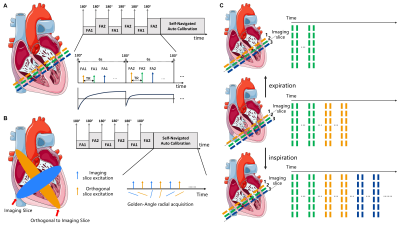 |
Computer Number: 58
4326. A
fast 2D free-breathing myocardial T1 mapping technique with
multi-slice free-running acquisition and self-navigated motion
calibration
H. Huang, J. Hu, J. Xu, P. Hu, H. Qi
School of Biomedical Engineering & State Key Laboratory of Advanced Medical Materials and Devices, ShanghaiTech University, Shanghai, China
Impact:
The proposed novel 2D free-running technique generating high-quality cardiac T1 maps in short scan time offers new strategy for respiratory motion correction and can be applied to challenging scenarios such as exercise cardiac MR. |
|
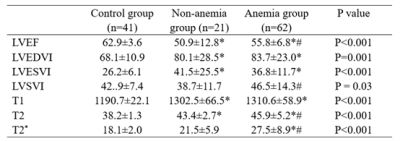 |
Computer Number: 59
4327. Myocardial
iron deficiency in renal anemia patients on peritoneal dialysis:
A cardiac magnetic resonance T2* mapping study
S. Jin, R. Jia, K. Jin, Y. Wu, T. Liu
The first hospital of China Medical University, Liaoning, China
Impact: Cardiac magnetic resonance T2* mapping is a
valuable technique for quantitatively measuring myocardial
iron levels, facilitating earlier diagnosis of iron
deficiency, and guiding treatment in peritoneal dialysis
patients.
|
|
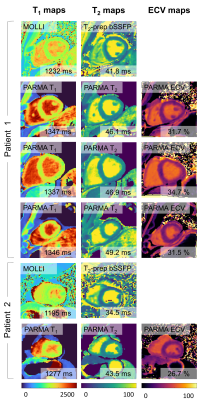 |
Computer Number: 60
4328. Free-breathing
joint T1-T2 and extracellular volume mapping of the long-term
transplanted heart at 3T.
P. Calarnou, A. Ogier, T. Abdurashidova, Z. Donato, S.
Fournier, Q. Liabot, J-B Ledoux, J. Yerly, R. Hullin, R. Van
Heeswijk
Department of Radiology, Lausanne University Hospital (CHUV) and University of Lausanne (UNIL), Lausanne, Switzerland
Impact: Transplanted hearts face less rejection after a
year but still require monitoring for complications. We
therefore demonstrated the feasibility and reference range
of free-breathing joint T1-T2 mapping in this patient group.
|
|
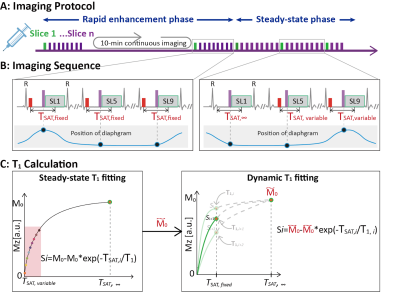 |
Computer Number: 61
4329. Free-breathing
rapid T1 mapping for the dynamic response quantification of
contrast-enhanced whole-heart myocardium
B. Liu, R. Guo, H. Ding
Tsinghua University, Beijing, China
Impact: The
porposed DART sequence is feasible to quantify the dynamic
pixel-wised myocardial T1 values
with sufficient
spatial-temporal resolution and whole heart coverage. It is
potential useful to trace the dynamic response of myocardium
during early gadolinium enhancement.
|
|
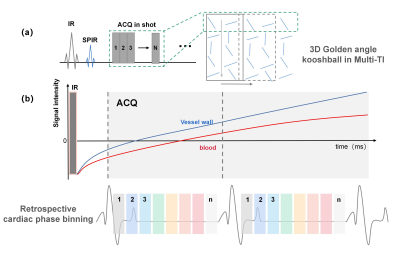 |
Computer Number: 62
4330. Simultaneous
cine and T1 mapping of carotid artery using 3D golden angle
radial acquisition
N. Xu, Z. Xu, Z. Li, H. Qiao, H. Sun, Z. Han, H. Chen, X.
Zhao
Center for Biomedical Imaging Research, School of Biomedical engineering, Tsinghua Univeristy, Beijing, China
Impact: The proposed sequence can get the dynamic
property of vessel wall and quantitative features of plaque
components in a single scan.
|
|
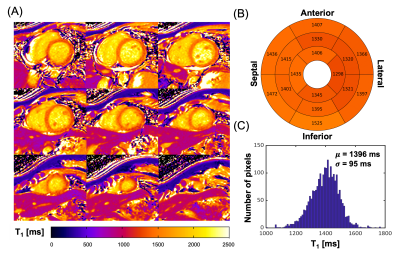 |
Computer Number: 63
4331. Free–breathing
SASHA (fbSASHA) for accurate whole-heart T1 measurement
B. Liu, R. Guo, H. Ding
Tsinghua University, Beijing, China
Impact: The proposed free-breathing SASHA sequence
(fbSASHA) is capable of eliminating the impact of patients'
cooperation in breath-holding. Additionally, it offers
whole-heart coverage field-of-view, facilitating superior
detection of focal myocardial lesions.
|
|
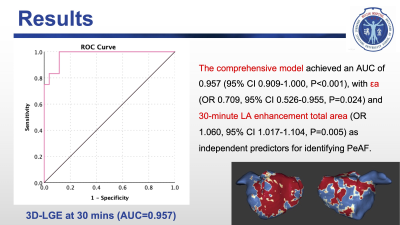 |
Computer Number: 64
4332. Preliminary
Study of CMR Combined with Myocardial Strain Imaging for Left
Atrial Fibrosis Assessment in Atrial Fibrillation Patients
H. Chong, L. Like, H. Zhang, P. Wu, J. Li, H. Dong, F. Yan,
W. Yang
Ruijin Hospital, Shanghai Jiao Tong University School of Medicine, Shanghai, China
Impact: Our research provides a promising imaging tool
for the management of AF patients, with potential
translational applications focused on quantitatively and
visually assessing LA function and structural remodeling,
personalizing treatment, assisting intraoperative
navigation, and enabling long-term monitoring.
|
The International Society for Magnetic Resonance in Medicine is accredited by the Accreditation Council for Continuing Medical Education to provide continuing medical education for physicians.